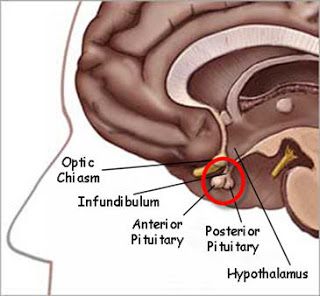By: Dr. Paul Bonthuis PhD.
Two simultaneous reports by Garrison et al. and Beets et al. in last week’s issue of Science discovered a C. elegans peptide neurotransmitter, and two cognate receptors, with genetic, structural, and functional similarity to the mammalian oxytocin/vasopressin (and non-mammalian vertebrate vasotocin) signaling systems. In mammals, oxytocin and vasopressin are structurally similar octomeric neuropeptides that are secreted from the pituitary and have wide ranging effects on physiology and complex behaviors, including many social behaviors. For example, these molecules have been linked to pair-bonding and monogamous behaviors in voles. Amazingly, similar to the roles of oxytocin/vasopressin, the 11-mer C. elegans peptide “neurotocin”, and the genes for the receptors ntr-1 and ntr-2, display sexually dimorphic expression in the C. elegans nervous system and were proved to play important roles in reproductive and learned foraging behaviors of the worm. The finding of an ancient neural regulator in the structurally simple nervous system of the worm that has conserved functional roles on behavior with the structural complex nervous systems of vertebrates, has the potential to reveal fundamental mechanistic insights on the neural regulation of complex behaviors. For a thorough explanation of the implications of the discoveries, read “The Mood of the Worm” by Scott Emmons in the same issue of Science.
REFERENCES and ABSTRACTS:
Science 26 October 2012:
Vol. 338 no. 6106 pp. 540-543
DOI: 10.1126/science.122620
Oxytocin/Vasopressin-Related Peptides Have an Ancient Role in Reproductive Behavior
1. Jennifer L. Garrison,
2. Evan Z. Macosko,
3. Samantha Bernstein,
4. Navin Pokala,
5. Dirk R. Albrecht,
6. Cornelia I. Bargmann
Abstract
Many biological functions are conserved, but the extent to which conservation applies to integrative behaviors is unknown. Vasopressin and oxytocin neuropeptides are strongly implicated in mammalian reproductive and social behaviors, yet rodent loss-of-function mutants have relatively subtle behavioral defects. Here we identify an oxytocin/vasopressin-like signaling system in Caenorhabditis elegans, consisting of a peptide and two receptors that are expressed in sexually dimorphic patterns. Males lacking the peptide or its receptors perform poorly in reproductive behaviors, including mate search, mate recognition, and mating, but other sensorimotor behaviors are intact. Quantitative analysis indicates that mating motor patterns are fragmented and inefficient in mutants, suggesting that oxytocin/vasopressin peptides increase the coherence of mating behaviors. These results indicate that conserved molecules coordinate diverse behavioral motifs in reproductive behavior.
Science 26 October 2012:
Vol. 338 no. 6106 p. 469
DOI: 10.1126/science.1225996
Vasopressin/Oxytocin-Related Signaling Regulates Gustatory Associative Learning in C. elegans
1. Isabel Beets1,
2. Tom Janssen1,
3. Ellen Meelkop1,*,
4. Liesbet Temmerman1,
5. Nick Suetens1,
6. Suzanne Rademakers2,
7. Gert Jansen2,
8. Liliane Schoofs1,†
Abstract
Vasopressin- and oxytocin-related neuropeptides are key regulators of animal physiology, including water balance and reproduction. Although these neuropeptides also modulate social behavior and cognition in mammals, the mechanism for influencing behavioral plasticity and the evolutionary origin of these effects are not well understood. Here, we present a functional vasopressin- and oxytocin-like signaling system in the nematode Caenorhabditis elegans. Through activation of its receptor NTR-1, a vasopressin/oxytocin-related neuropeptide, designated nematocin, facilitates the experience-driven modulation of salt chemotaxis, a type of gustatory associative learning in C. elegans. Our study suggests that vasopressin and oxytocin neuropeptides have ancient roles in modulating sensory processing in neural circuits that underlie behavioral plasticity.

